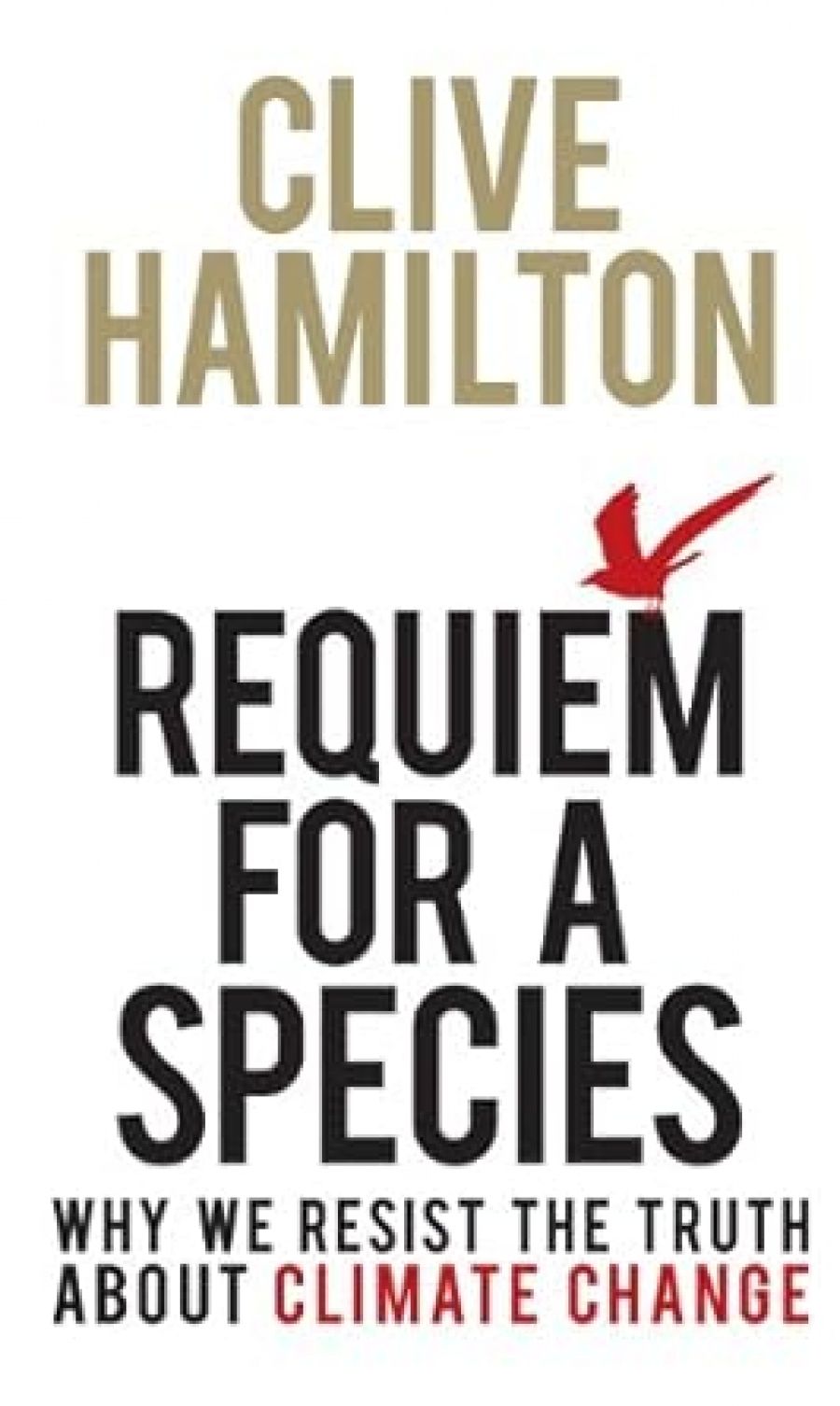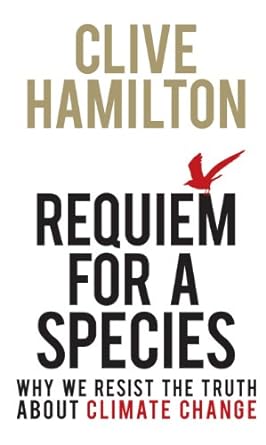
- Free Article: No
- Contents Category: Climate Change
- Review Article: Yes
- Article Title: 2 + 2 = 5
- Online Only: No
- Custom Highlight Text:
Clive Hamilton’s meticulously researched book Requiem for a Species is to climate change what Jonathan Schell’s book The Fate of the Earth (1982) was to the nuclear menace: an advance eulogy for the human race, not for the faint-hearted. Hamilton’s predicament is captured in the opening statement: ‘sometimes facing up to the truth is just too hard.’ Yet there is a solution, the author states: ‘We don’t have to take it lying down ... Only by acting, and acting ethically, can we redeem our humanity.’
- Book 1 Title: Requiem for a Species
- Book 1 Subtitle: Why we resist the truth about climate change
- Book 1 Biblio: Allen & Unwin, $24.95 pb, 240 pp
- Book 1 Cover Small (400 x 600):

The chapter on ‘growth fetishism’, a theme discussed earlier in Hamilton’s book of the same name (2003), explores popular cultural tenets in the root of environmental demise. Inexorable growth, from DNA to GDP, appears to constitute the equivalent of a natural law that nations are blindly following. A closely related chapter, ‘The Consumer Self’, documents some of the materialistic fads that are blithely pursued by gullible consumers.
The chapter ‘Many Forms of Denial’ reiterates an essential truth: it is people’s value systems, disconnected from nature, that underwrite environmental demise. Denial prevails, ranging from innocent ignorance to a vicious war against science by mercenary mouthpieces and ‘man-over-nature’ ideologues. Hamilton identifies the political origin of climate change denial in the wake of the fall of the Berlin wall, when United States conservatives rushed to replace the ‘red menace’ with a ‘green threat’.
Hamilton goes on to analyse deeper origins of the denial syndrome: ‘humans have evolved to assess and respond to risk through immediate feelings rather than cognitive processing.’ This Achilles heel of human societies may constitute a species-specific blueprint. To some political leaders, science, which hinges on the discovery of natural truths, can pose a danger. The denialists’ ‘sound science’, which specialises in providing conclusions consistent with the prejudices and vested interests of those who pay, is consistent with Orwell’s ‘2 + 2 = 5 if the party says so’.
Chapter Five, ‘Disconnection from Nature’, reviews theories on the relationship between humans and nature and elaborates on the audacity of those purporting to design an artificial world detached from biological realities. Equally inexplicable is the resistance by sections of the church to environmentalism, in contradiction of man’s duty to protect God’s creation. Here, fundamental visions of the earth as a mere corridor to heaven evolve imperceptibly into space-age fads, such as the investment of more resources into the search for bacteria on Mars than into the preservation of terrestrial havens – the Amazon rainforest and the Great Barrier Reef.
In Chapter Six, ‘Is There a Way Out?’, Hamilton explores the weird world of geo-engineering, alternatively conceived by desperate environmentalists or anthropocentric supremacist engineers. Compounding the poisoning of natural systems, plans are afoot for further grand experimentation that may reduce the atmosphere to a concoction of sulphur aerosols and carbon gases, the toxic equivalent of the Permian-Triassic methane and hydrogen sulfide-rich atmosphere modelled by Peter Ward in his book Under Green Sky: Global Warming, The Mass Extinctions of the Past and What They Can Tell Us about Our Future (2007).
Anthropocentric ideologues appear deaf to the existential threat to their own existence, as conveyed among others in the pre-Copenhagen Oxford climate science meeting, reported by Hamilton, where Joachim Schellnhuber, Director of the Potsdam Institute for Climate Impact Research, stated: ‘We’re simply talking about the very life support system of this planet.’ Deeper philosophical dimensions of the rise and fall of Homo sapiens remain to be explored. Despite the possibility hinted at in the title, the species will live on, perhaps in remote subarctic regions.
It takes intellectual rigour, as well as moral courage, to write a rational analysis of what is essentially the collective insanity of our own species. This book ought to be mandatory reading for community leaders who, while professing to protect the lives of future generations, tolerate the progressive destruction of the atmospheric conditions that led to the emergence of agriculture and civilisation some 8000 years ago. It should be distributed to the young to spur them into action. Copies of the book should be stored in the Svalbard Global Seed Vault, a latter-day Noah’s ark, to let future climate-change survivors gain an insight into the history of their predicament.


Comments powered by CComment